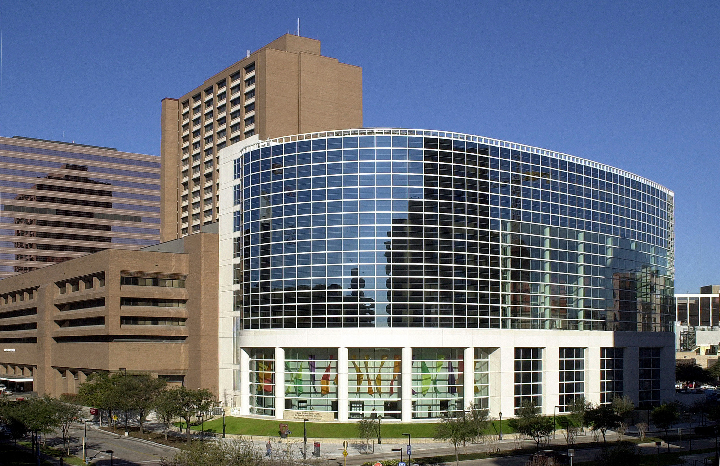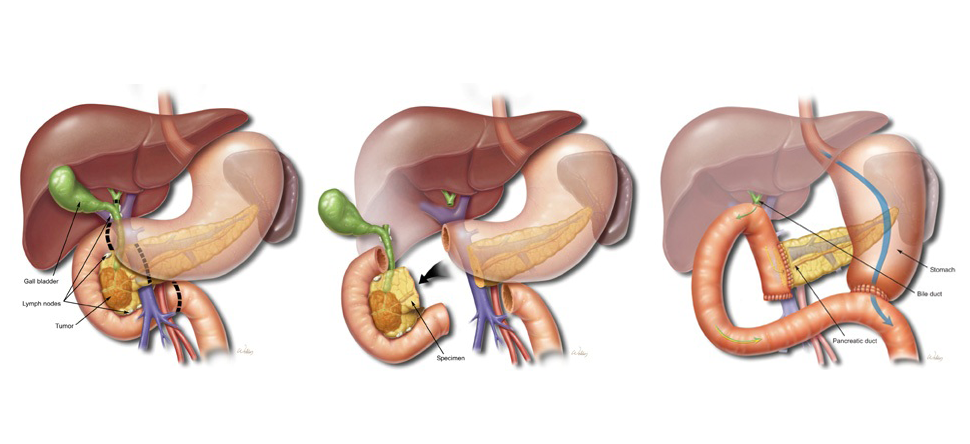A Whipple procedure is a surgery that involves removing the head of the pancreas, part of the small intestine that is attached to the pancreas, part of the bile duct that runs through the head of the pancreas and the gallbladder.
Our surgical team usually performs a modified version of this operation called Pylorus-preserving Whipple that saves the entire stomach and the valve at the bottom of the stomach. The advantage of this version is that it helps maintain your normal stomach function and may also prevent reflux of intestinal contents back into the stomach.
During this procedure, the pancreas, bile duct and stomach have to be reconnected to the small intestine. This restores your digestive functions by re-establishing the flow of pancreatic juice from the pancreatic duct, bile from the bile duct and food from the stomach. The areas that have been re-connected have to heal without a leak.
While this is a major surgery and can be very technically challenging, our surgeons specialize in pancreas surgery, have years of training and experience and are experts in performing surgery with very little blood loss and outstanding outcomes.
Most patients can safely go home about three days after surgery. However, your care team will make sure you are ready and it is safe for you to go home. On the day of discharge, plan to leave the hospital before 11am.
Variations of the Surgery
You will report to a preoperative nursing unit, where you will change into a hospital gown. A nurse will review your chart and confirm that all paperwork is in order. You will be taken to a pre-operative holding area, where an anesthesiologist will start an IV. Before any medications are administered, your surgeon will verify your name and the type of procedure you are having, and answer any further questions. You will then be taken to the operating room. After the appropriate form of anesthesia is administered, surgery will be performed.
- Pylorus-preserving Whipple: As described above, this variation saves the entire stomach and the valve at the bottom of the stomach. The advantage of this variation is that it preserves gastric function, maintaining the normal stomach function and preventing reflux of intestinal contents back into the stomach.
- Classic Whipple: In this version, the last third of the stomach and the valve at the bottom of the stomach are removed. In some cases, the reconstruction of the small intestine is slightly different. This is usually performed when the tumor is too close to the stomach and complete removal of the tumor requires removal of the bottom of the stomach.
After Surgery
Most patients need about five to six weeks to completely recover from the procedure. Each week you will feel better and be able to do more. It is normal to be tired, have a poor appetite, not be able to eat much at a time, have indigestion and some moderate pain at the incision site. All these symptoms will improve gradually with time.
Where To Go For Surgery

Our doctors perform surgery at Baylor St. Luke's Medical Center. If surgery is recommended, the nurse will give you instructions on where to report and when. She will also provide other instructions you will need to prepare for surgery. This may consist of consultations with cardiology and pulmonary physicians, and possible immunizations. Please do not hesitate to contact us if there are any questions about your preoperative instructions.








 Credit
Credit
